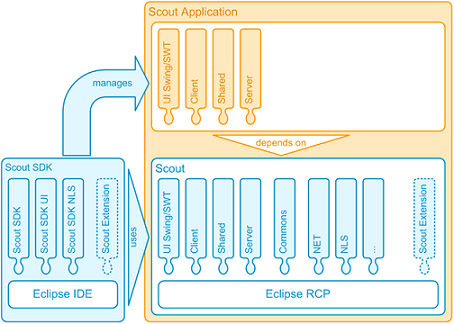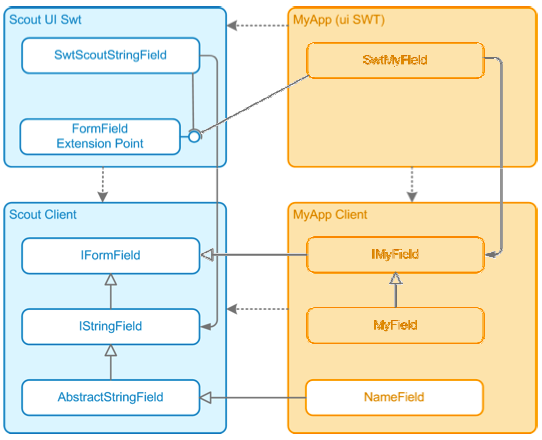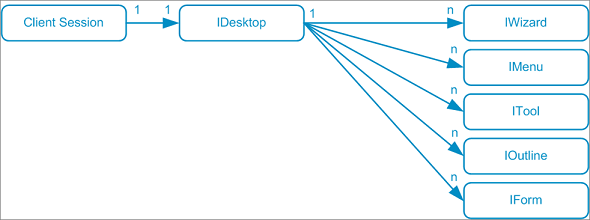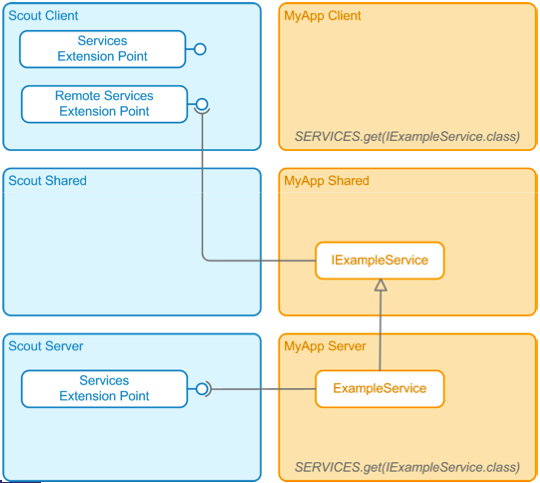Notice: this Wiki will be going read only early in 2024 and edits will no longer be possible. Please see: https://gitlab.eclipse.org/eclipsefdn/helpdesk/-/wikis/Wiki-shutdown-plan for the plan.
Difference between revisions of "Scout/Documentation"
(New page: = Overview = = Architecture = Image:Scout architecture overview.png == Main parts of a scout project == Client,shared,swt,server Equinox client server = Client / Server Comm...) |
(title capitalization) |
||
| Line 5: | Line 5: | ||
[[Image:Scout architecture overview.png]] | [[Image:Scout architecture overview.png]] | ||
| − | == Main | + | == Main Parts of a Scout Project == |
Client,shared,swt,server Equinox client server | Client,shared,swt,server Equinox client server | ||
| Line 139: | Line 139: | ||
= Scout SDK = | = Scout SDK = | ||
| − | == Idea | + | == Idea Behind Scout SDK == |
== Main Features == | == Main Features == | ||
| − | === Building | + | === Building Forms and Outlines === |
=== Generation of DTOs (form data, field data) === | === Generation of DTOs (form data, field data) === | ||
Revision as of 12:38, 16 June 2010
Contents
Overview
Architecture
Main Parts of a Scout Project
Client,shared,swt,server Equinox client server
Client / Server Communication
Service Tunnel
Proxy services, Service Factories Entry point server (servlet) Outgoing point client
Message Structure
Base64 encoded Serialized objects
Session Handling
ServerSession
ClientSession
Client Concepts
Separation of UI and GUI
Job Queue
Component Model
Client Session
The client session is the main entry point for client-server communication.
Desktop
The desktop is the entry point of every Scout client application. It can (may) consist of top-level menus, active message box stack, set of available outline, active outline, active tableview, active detail form, active search form, form stack (swing: dialogs on desktop as JInternalFrames; eclipse: editors or views), dialog stack of modal and non-modal dialogs (swing: dialogs as JDialog, JFrame; eclipse: dialogs in a new Shell).
Outline
Typically a Desktop holds multiple outlines. They represent different entry points for the navigation within the application. For every outline a tree is available which allows navigating within the application.
Form
A form is both a model structure of a ui concept known as dialog or view and also a model of a wizard page. Wizard buttons are added automatically to the main box if missing.
Form fields
Form fields are the basic elements for user inputs fiels within a form. Examples are:
- TextField
- SmartField
- NumberField
- DateField
- FileChooser
- ListBox
- TreeBox
- CheckBox
- RadioButton
- ToogleButton
Futhermore there exists composites fields like:
- GroupBox
- TabBox
- SequenceBox
- SnapBox
- RangeBox
- RadioButtonGroupBox
Menu
The menu component include all links, functionalities, etc... available within the application.
Tool
Tool component is used for grouping or dividing different views. This can be used for building business views on datas or just structuring your own application.
Wizard
Wizards support a user to work in a process driven approach on a task.
Server Concepts
Server Side Equinox
Jetty, ServerApplication as Startup Point
Transaction Handling
Configuration
SQL Support
Statement Builder
Security
Authentication and Authorization
JAAS
Security Filters
Granting
Describe the Permisssion Classes, the permission store, ACCESS....
Utilities
Codetypes
NLS-Support
Logging
Scout Services
scout.commons
Scheduler
Client Notification
Scout SDK
Idea Behind Scout SDK
Main Features
Building Forms and Outlines
Generation of DTOs (form data, field data)
NLS Editor
Support for Webservices
Architecture of Scout SDK
Describe how JDT and PDE is used
Back to Scout




